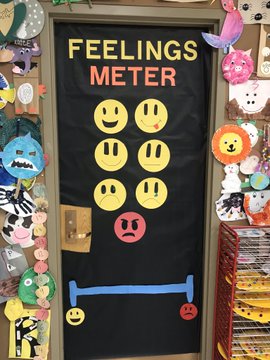Social-emotional learning for the coming school year actually began in July with professional development in Naperville School District 203 in the Chicago suburbs.
Administrators in the district, where SEL has been entrenched in the curriculum for years, focused first on the skills of teachers. The goal was to help the educators manage their own stress and recognize the trauma they had experienced during the pandemic, says Christine Igoe, assistant superintendent of student services.
“We needed to take care of teachers so they could take care of students,” Igoe says.
Educators practiced techniques to help students cope with stress and trauma. Making students feel safe and comfortable as they meet their new teachers has been the district’s priority while reopening classrooms, Igoe says.
More from DA: How SEL, personalized learning drive a Texas district’s reopening
That includes holding more intentional morning class meetings where students and teachers can discuss challenges they’re facing, how they’re feeling and other emotions. This is a key way for a class to get to know each other and build trust, Igoe says.
“During the first three weeks of school, the focus is on building relationships with kids,” Igoe says. “We’ve got to go slow to go fast. I could teach algebra on the first day but if I don’t have kids who feel safe, I’ll have to reteach it in two or three weeks when they’re ready to learn it.”
Building these types of routines while helping students become more adept at using technology will also smooth the transition should any of the district’s schools have to return to online learning full-time.
Naperville’s educators view SEL as a skill that’s as crucial to learn as academic subjects. SEL, for example, can teach students how to regulate emotions, initiate conversations and disagree with someone respectfully, among other techniques.
“We used to think we all came to table with these skills,” Igoe says.
SEL lessons from Hurricane Katrina
Staff and students need time to reconnect and heal when schools reopen before classes try to jump back into academics and assessments, says Karen VanAusdal, senior director of practice at CASEL, one of the organizations that pioneered the application of SEL to K-12 education.

“Yes, we’re dealing with a pandemic but we’re also dealing with economic destabilization and a nationwide mobilization against systemic racism,” VanAusdal says.
In preparation for opening, principals, for instance, can contact every staff member to discuss the successes and failures of spring online learning.
These discussions can also make building leaders more aware of challenges teachers and staff are contending with at home, such as caring for medically vulnerable family members.
Staff members can also hold “restorative circles” where they can talk about their own experiences and feelings about the pandemic, the Black Lives Matter movement, the presidential election and other pressing national issues, VanAusdal says.
This will help educators add anti-racist pedagogy to the new school year’s curriculum in a way that’s relevant and gives students some control over classroom learning activities.
“We know that powerful learning happens when students are directing it,” she says.
More from DA: How rural schools sought opportunity in school closures
Administrators should look beyond teachers in providing social-emotional support to students. Non-instructional staff should also be trained to help children cope with stress and anxiety.
Data will also be essential to measure learning loss, but that doesn’t mean educators should rush to make up lost ground as soon as school restarts. Administrators can use the experiences of schools recovering from Hurricane Katrina as a guide, she says.
“After Hurricane Katrina, the students who did the best were those who entered into welcoming, supportive environments, and learning loss was made up,” she says. “If they returned to a chaotic environment, the learning loss continued.”
DA’s coronavirus page offers complete coverage of the impacts on K-12.







